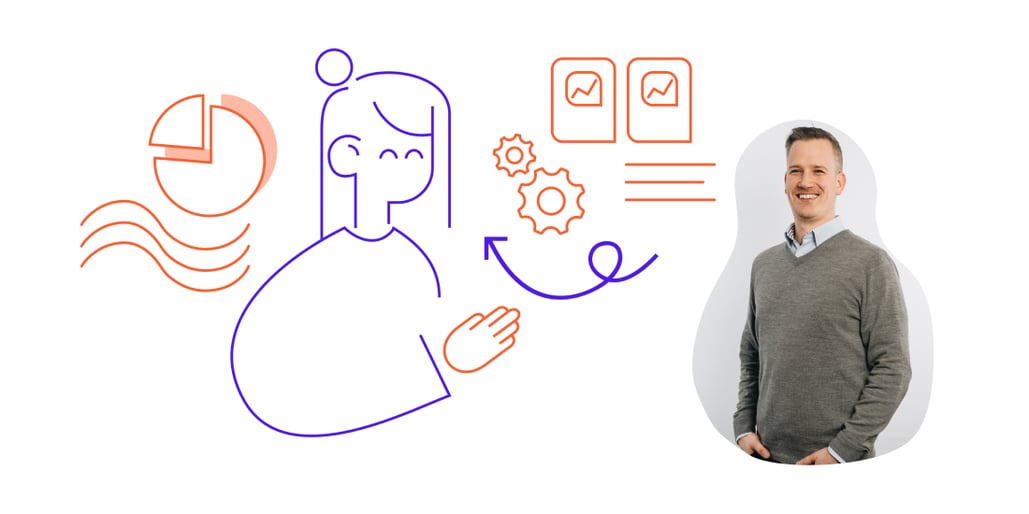
Over the past few years, eCommerce has had to keep up with profound changes like the rise of mobile commerce and social commerce as well as big shifts in customer behaviour and expectations. It's no wonder that the headless architecture has been gaining popularity among online stores.
Why do online need headless eCommerce platforms?
As mentioned, the online business world has undergone tremendous changes in the past few years. The most noticeable one would be how user behaviour, expectations and habits have changed. eCommerce had to adapt to make the user experience better and more enjoyable, a lot of the times including custom solutions and integrations. But now that may not be enough.
The rise of mobile apps and, as a result, mobile commerce as well as other customer touchpoints across different devices and platforms makes it hard for traditional eCommerce stores to keep up. Users are adapting more and more new technologies into their daily lives and expect to have the same, amazing customer experience across all of them.
This ever-changing landscape is precisely why traditional eCommerce needs headless. It's the only way to future-proof your business and keep up with your customers, which is even more important now in times of economic troubles. So, what is headless in the context of an eCommerce store?
What is a headless eCommerce?
We've previously covered what is headless in general on our blog, let's quickly review what headless means for an online store specifically. As you know, every piece of software has a front-end and back-end. If the frontend is the head and backend is the body in this scenario, you can already imagine what headless eCommerce means.
The frontend is decoupled from the backend, meaning your developers can separately manage the presentation layer and the content management layer. If you're looking to learn more about headless and how it's different from a traditional CMS - check out our eBook which covers everything you need to know about headless CMS and more!
This way you essentially have two separate systems connected through API. There's a lot of benefits to this headless approach, not only when it comes to the digital experience for the user but also from the brands' perspective.
The benefits of headless commerce
As an eCommerce business you need to consider how headless could improve your users' shopping experience but also what other benefits switching to a headless content management system would have for your company. Let's go over some of the key pros of the headless approach.
Seamless integration
A headless commerce solution should include an API that allows easy integration with other platforms within the system. You will be able to introduce and test new eCommerce solutions, devices and platforms faster and save your developers' time. Because of the API-first approach, your site will also have more flexibility in terms of introducing new features.
Competitive edge
Headless commerce allows rapid updates to the products without impacting the backend. You can quickly modify the frontend to adjust to customer needs and trends. Usually, the biggest businesses using traditional platforms release updates once a week. Compare that to other services such as Amazon, which releases updates every 1.7 seconds, reducing time and cost for outages. With headless, you do not need to update the entire system. You can quickly deliver updates without the need to update the backend, which gives you a significant advantage.
Faster time to market
With traditional eCommerce platforms, your production and deployment times can be extremely slow. A headless commerce platform allows brands to develop frontend products and content on various platforms and touchpoints. Content and products can be hosted and delivered through API to anyone. So if a new customer adopts new channels or regions, it is easier to get into the new markets.
Using headless, anytime there's a new device or channel popping up among customers, you can react quickly and efficiently. With a traditional eCommerce platform this would not be possible. And time is extremely important right now, as trend cycles get shorter and shorter.
Going omnichannel (without pain)
Customers are becoming more and more decentralised. What do we mean by that? Their decision-making process is less and less straightforward and involves more and more channels. In the past, people would use Google to research products, choose one and purchase it online or in-store.
Now, they might first see the product on TikTok, then see a review on YouTube and after that there might be an ad on their Instagram. And then they might make an order through Amazon's Alexa. For traditional commerce platforms, it would be very difficult, time-consuming and costly to manage all these channels. However, with a headless eCommerce solution based on APIs, integrations with all the channels will be seamless and much easier.
A great example of this omnichannel strategy is Walmart's Universe of Play which we talked about in our Web Summit 2022 summary.
Making the customer experience more personal and consistent
Although customer needs can change over time, an eCommerce business should still provide the best customer experience in each channel. People also prefer buying from online stores with a clear understanding of their needs in any market. These things go beyond a typical “people bought all the goods from X”.
Using API you can store customer data on the back-end and use it to better cater to their needs across different frontend solutions, making their experience more consistent and smoother. This will create a feeling like you really understand what your user needs and wants, increasing brand loyalty and retention.
Because the presentation layer is separate from the back-end, you also have more control over the user experience and can create a more custom interface without being constrained by a specific CMS technology.
More flexibility for developers
Another huge benefit of the headless solution for eCommerce is that it provides a great deal of flexibility and freedom to your development team. Because the front-end and back-end are separate, the developers can choose to create the frontend with the most suitable technologies. As mentioned above, they are not bound to a specific CMS technology (like PHP with Wordpress). They can work with more current frameworks like Node.JS to ensure your site is performing very well.
As a business, this also is a big benefit for you. Sometimes it can be hard to find developers with specific expertise required by the content management system, forcing you to either settle for a less experienced team or to spend a lot more on development that you'd perhaps like to. With a headless CMS you can fully control the front-end and, as a result, have more flexibility when it comes to choosing developers.
Agile marketing
A headless commerce system can support emerging technologies based on existing technologies. It works well with new customer experiences. It puts marketing teams back in control and allows them to launch multiple sites across different brands, segments and portfolios.
Headless eCommerce software allows marketing teams to build their new sites in less than 24 hours. This means you can get more out of your marketing than with a traditional CMS. Your marketing team can take matters into their own hands, without the need for help from developers, test new solutions, integrations and create campaigns quickly.
Better conversion rate optimisation
This benefit ties in nicely with more agile marketing. Because of the pros we mentioned above, your marketing team has more tools and flexibility when it comes to optimising the user shopping experience. They can conduct more tests more easily and quickly without developers having to get involved. This leads to better CRO (Conversion Rate Optimisation) and will help your business grow.
Should you switch to a headless eCommerce platform?
As you can see, there's a lot of benefits to the headless approach. So, should you be considering headless commerce platforms for your eCommerce company? In the end, it's about your specific needs as well as the needs of your customers. If you feel like the headless benefits above resonate with you - there's a big chance this solution is the right choice.
If you're considering making the switch to a headless CMS, we recommend reading our article about how your current CMS might be holding you back from growth. It includes the 8 biggest signs that a headless commerce platform will be the best decision for your business. However, it's always a very individual decision, so you can always contact us and talk to experienced developers about the best solutions for your eCommerce architecture.

Per Andre Rønsen
Per André is a Co-founder at Frontkom with 14+ years of experience as CTO and CIO. He has extensive experience with people and technology for both private and public sector. He is also co-founder of Dignio Health Tech, SMSpay, Web3 enthusiast and Co-pastor of 3:16. Per André writes about CMS, headless, awesome tech and team composition and efficiency.

